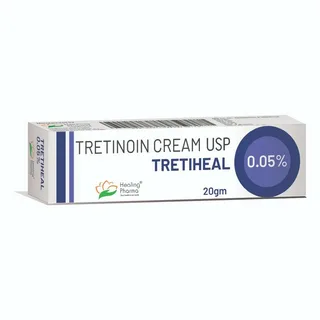Tazorac (tazarotene) is a drug that’s FDA-approved to treat acne and psoriasis. It is also used off-label for other conditions. You should not use Tazorac during pregnancy because it can harm a fetus.
Tazorac is available as a gel and a cream. Your doctor may prescribe either strength for you.
Acne
Tazorac (tazarotene) is a topical medication that can be used to treat acne and plaque psoriasis. It can also be used to reduce the appearance of fine lines and wrinkles, mottled light or dark patches on the skin and benign facial lentigines (noncancerous freckles).
Tazarac is a type of retinoid, which works by changing how your skin cells turn over. This reduces oil production, unclogs pores and helps fade discolorations and smoothes skin texture. It also increases the effectiveness of certain types of acne medications.
The most common side effect of Tazorac cream and gel is skin irritation. This usually happens in the first few weeks of use. If it’s severe, you should get medical help right away. Signs of a serious reaction include hives around your throat or tongue, or trouble breathing along with hives.
Psoriasis
Psoriasis is a long-term condition that causes patches of raised, red skin covered with silvery and scaly scales. It can be itchy and painful. There are several types of psoriasis. Plaque psoriasis is the most common form of the disease. It appears on the knees, elbows, scalp, and other areas of the body.
Some people get guttate psoriasis, which looks like small, drop-shaped spots of red skin. This type is often triggered by an infection, such as strep throat. Others get pustular psoriasis, which is characterized by pus-filled bumps that are red and scaly. This type of psoriasis can appear on any part of the body, but it is more common in skin folds, such as the armpits or groin.
Tazorac (tazarotene) cream and gel are used to treat plaque psoriasis in adults. It reduced the thickness of psoriasis plaques in two clinical studies. It also improved the look of psoriasis and cleared up other signs of psoriasis, such as redness and scaling.
Sun sensitivity
Sun sensitivity is a side effect of Tazorac that can occur in some patients. It can make your skin more sensitive to the sun and increase your risk of sunburn. Avoid sun exposure as much as possible while taking Tazorac. If you must be outside, wear a hat, clothes that cover your skin, and sunscreen with SPF 30 or higher. Also, avoid using tanning beds and sunlamps while you’re taking this medication. It is also important to share with your doctor and pharmacist about any other prescription or nonprescription drugs, as well as vitamins, herbs, and supplements you are taking.
Pregnancy
This medication is in the FDA pregnancy category X, meaning that it may harm an unborn baby. Women who are pregnant or who could become pregnant should not handle this medication. Those who do handle it should use a non-hormonal form of birth control, such as condoms or pills. Also, breastfeeding is not recommended while taking tazorac.
Large doses of oral retinoids have been shown to cause fetal abnormalities in animal studies. This topical form of the drug has not been studied for fetal risk in humans. However, since it is absorbed through the skin, the medication should not be used during pregnancy. If it is used during pregnancy, a negative pregnancy test should be done within 2 weeks of starting therapy. Women of childbearing potential should be apprised of the potential hazard to the fetus and advised to use reliable methods of contraception.
Breastfeeding
Breastfeeding is the act of feeding an infant with human breast milk. Breast milk contains calories, vitamins, minerals, and other nutrients that help an infant grow and develop. It also contains antibodies that protect the infant against diseases and infections. Breastfeeding can be done directly from the mother’s nipple, or with the use of a pump and bottle. It is recommended that breastfeeding mothers use only breast milk for the first six months of life.
It is not known whether tazorac passes into breast milk or if it could harm a nursing baby. However, women should avoid direct contact of the medication with the nipple and areola when breastfeeding. Talk to your doctor about breastfeeding and any medications you are taking. Also, do not take this medication during pregnancy.tazorac uk
